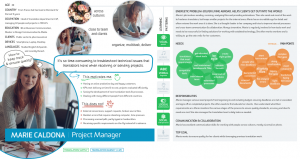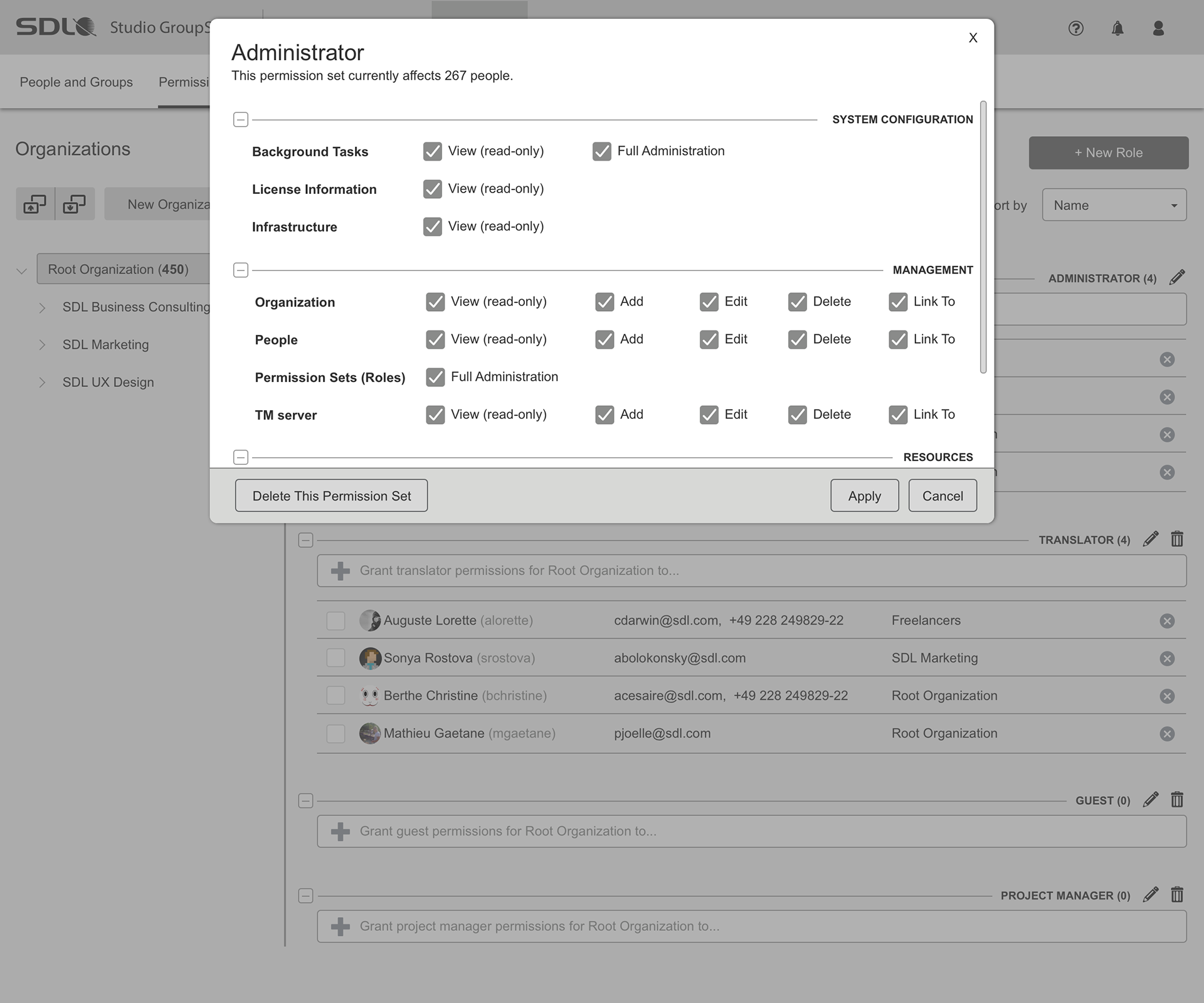This is about user-centered design and how I applied it to one of SDL’s language technology products Trados Groupshare. To solve for the needs of the 200k customers of our translation productivity line, I met translation specialists who have shared with me what is crucial for them and what helps them be efficient.
I’ve never been a translator or a translation manager, so what helped me advocate for them in team meetings was being able to actually understand their daily challenges. When you think about what is going to help you stand out in front of your users, remember that user-centered design is crucial to the success of the end-to-end experience. This approach grounds you in data about the people who will use your service in their day-to-day context. What you create makes a difference in somebody’s life. This is an important part of your responsibility, especially if your solution is complex and feature-rich.
In 2016, for me the brief was simple: redesign SDL Trados GroupShare.
Trados GroupShare was ugly because it had dependencies on SilverLight, an old technology. It was complex, integrating a variety of translation services to help people who manage translation projects to collaborate with people that actually translate or review. The product had to support them in the process of centralizing projects by efficiently using automated translation, translation memories, terminology bases and other solutions for administrative tasks, such as ERPs or invoicing.
An initial experience assessment highlighted a variety of usability problems. The design had to balance simplicity and functionality, fit in the SDL ecosystem, and above all make sense and be enjoyable throughout all the different steps of the customer journey.

Email notification for new project

Integration with B2C tool, Trados Studio
Next step, I partnered up with other teams in SDL to understand together what the new Trados GroupShare should be like. We visited translation offices, attended industry meet-ups, scheduled some remote calls with people that were using GroupShare or competing solutions. We documented the critical things that needed to be controlled by them versus the computer. It took weeks, but at the end we had a great pool of insights that became the foundation for the change in the service.


It's such a great privilege to have a customer talk about their real-world needs because you understand the importance of getting it right from start to finish!
Next, while prototyping the new product, I kept in mind some key intricacies: while smaller agencies choose completely voluntarily to purchase your product or not, in bigger enterprises the decision-maker dictates the tool that will be used. So when you move functionality around in the consumer world, users get annoyed, but if you do that in an enterprise environment it can have serious impact on the performance and possibly even their compensation, so you have to be very careful and the stakes are really high.


Then worked closely with our Visual Designer to help shape how the new interface would look like and ensure that next to being valuable and usable, it would also be “lovable”. He proposed a new cool visual language and created a design system, applicable to all the products in SDL's ecosystem.
Lastly I inspired the engineering and marketing teams with storyboards that communicated the key benefits and interactions and also how the experience is expected to adapt to context and devices.
The results of the new release were astounding: revenues doubled! But most importantly, everyone in the org understood the value of user-centered design and it became the norm for every project.










